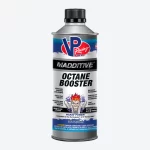If you’ve ever heard the term “hooptie” thrown around in conversations about cars, you might have wondered what it really means. A “hooptie car” refers to an old, beat-up vehicle that’s often well past its prime. These cars are typically associated with mechanical problems, worn-out interiors, and significant cosmetic flaws, but they still get the job done—more or less.
Origin of the Term “Hooptie”
The term “hooptie” gained popularity in the 1980s and 1990s, particularly in hip-hop culture. It’s believed to have originated from the slang “coupe,” referring to an old, dilapidated car. Over time, the meaning broadened to encompass any car that’s seen better days. Whether it’s due to high mileage, a worn-out body, or endless repair needs, a hooptie car is far from glamorous, yet it carries its own unique charm.
Characteristics of a Hooptie Car
What makes a car a hooptie, you ask? Here are the key traits:
Mechanical Issues and Wear
Most hoopties are known for their less-than-perfect mechanical condition. Whether it’s a rattling engine, faulty transmission, or squeaky brakes, these cars often require regular TLC to stay on the road.
Cosmetic Flaws
It’s common to see hooptie cars with dented doors, rust patches, peeling paint, and cracked windshields. While these cosmetic imperfections don’t affect the car’s ability to drive, they certainly add to its rugged, worn-down appearance.
Age and Mileage
Many hoopties have clocked hundreds of thousands of miles and have been on the road for decades. The wear and tear is evident not just in their looks but in how they drive as well.
The Evolution of the Hooptie Car
Hoopties in the 1990s
In the 1990s, hoopties were iconic in popular culture, especially in rap and hip-hop songs. Artists would proudly reference their clunkers as symbols of resilience and street credibility.
Modern-Day Hooptie Cars
Today, the concept of a hooptie has evolved. While many still associate the term with older cars, hoopties now span different makes and models, ranging from ancient sedans to once-luxurious vehicles that have seen better days.
Why People Still Drive Hooptie Cars
Affordability Factor
One of the biggest reasons people choose to drive a hooptie is cost. These cars can be purchased for a fraction of what you’d pay for a newer vehicle, making them an attractive option for budget-conscious drivers.
Sentimental Value
Some drivers keep their hoopties simply because they’ve grown attached. Maybe it’s their first car, or perhaps it’s been passed down from a family member—whatever the reason, the sentimental value makes it worth keeping.
A Reflection of Car Culture
For some, driving a hooptie is a badge of honor. It’s about embracing the imperfections of an old car and making it work, despite the odds. It’s also deeply rooted in car culture, where people appreciate the quirks of a vehicle that’s been through a lot.
The Advantages of Driving a Hooptie
Low Maintenance Costs
While hoopties may need frequent repairs, these fixes are typically inexpensive compared to the cost of maintaining a newer car with more advanced technology.
Less Worry About Dents and Scratches
Since your hooptie already has its fair share of dings, you’re less likely to stress over the occasional bump in a parking lot or scratch on the door.
Easy Customization
Hooptie owners often enjoy making simple, low-cost customizations to their cars, such as adding decals, funky seat covers, or even upgrading the sound system.
Downsides of Owning a Hooptie Car
Reliability Concerns
The biggest downside of owning a hooptie is its reliability. Older cars are prone to breaking down, leaving you stranded at the most inconvenient times.
Limited Safety Features
Hooptie cars usually lack modern safety features like airbags, backup cameras, and advanced braking systems, which could be a dealbreaker for some.
Constant Repairs
While repairs may be cheap, they can add up over time. Owning a hooptie often means spending your weekends under the hood or waiting at the mechanic’s shop.
How to Keep Your Hooptie Running Longer
Regular Maintenance
Routine maintenance like oil changes, tire rotations, and brake checks can keep your hooptie running smoothly. Skipping these basics could lead to more significant problems down the road.
DIY Repairs
If you’re handy with tools, doing your own repairs can save you a lot of money. From changing spark plugs to fixing minor leaks, learning how to do simple fixes can extend your hooptie’s life.
Finding Affordable Parts
Scouring junkyards or online marketplaces for used parts is a great way to keep your hooptie alive without breaking the bank.
Hooptie Car Culture
Influence on Music and Media
Hoopties have been immortalized in music, particularly in hip-hop. Artists often reference their beat-up rides as a metaphor for struggle and success. Think of it as the automotive equivalent of making something out of nothing.
Social Perception of Hooptie Drivers
Driving a hooptie may come with a certain stigma, as these cars are often viewed as “cheap” or “run-down.” However, among enthusiasts, hoopties are symbols of resourcefulness and grit.
Hooptie Pride and Communities
Believe it or not, there are online communities dedicated to hooptie pride, where drivers share their stories, photos, and tips for keeping their cars running.
The Role of Hoopties in Car Restoration Projects
Turning a Hooptie into a Classic
Many hoopties are actually diamonds in the rough. With a little love and restoration, they can be transformed into classic cars that stand out at any auto show.
Common Restoration Challenges
Restoring a hooptie can be a rewarding but challenging task. Finding the right parts, especially for older models, can be time-consuming and expensive.
How to Identify a Hooptie Before Buying
Inspecting the Engine
Before purchasing a hooptie, it’s essential to check the engine. Look for signs of leaks, unusual noises, and ensure it runs smoothly.
Checking for Cosmetic Damage
Cosmetic damage like rust or dents might not impact the car’s performance, but they’re indicators of how well the vehicle has been maintained.
Evaluating the Price vs. Value
While hoopties are inexpensive, make sure you’re not overpaying for a car that will cost more in repairs than it’s worth.
Famous Hooptie Cars in Pop Culture
Hoopties in Hip-Hop Music
In songs by artists like Ice Cube and Outkast, hoopties are symbols of humble beginnings and the journey to success.
Hoopties in TV and Movies
From sitcoms to movies, hoopties often make an appearance as the quirky car of a down-to-earth character, further cementing their place in pop culture.
How to Make the Most of Your Hooptie Car
Simple Upgrades for Comfort
Adding seat cushions, steering wheel covers, or even tinting the windows can make your hooptie feel a little more comfortable for everyday driving.
Improving the Sound System
One popular upgrade for hoopties is the sound system. A good set of speakers or a new stereo can make your daily commute much more enjoyable.
Hooptie Car Hacks
From duct-tape fixes to creative solutions for broken parts, hooptie owners have become pros at improvisation.
Hooptie Car Insurance and Legal Considerations
Finding Affordable Insurance for Older Cars
Insuring a hooptie is usually cheaper than insuring a newer vehicle, but you’ll want to shop around for a policy that covers the essentials without costing more than the car is worth.
Legal Requirements for Road Safety
Even if your hooptie is old, it must still meet basic road safety standards. Make sure your car passes emissions tests and has functional brakes, lights, and signals.
Hooptie Car Buying Tips
Things to Look for When Buying a Hooptie
When shopping for a hooptie, focus on the engine and transmission condition rather than aesthetics. A little rust is fine; a broken engine isn’t.
Negotiating the Price
Since hoopties are typically sold at low prices, don’t be afraid to negotiate. Sellers may be eager to offload an old car, giving you leverage to get an even better deal.
Is a Hooptie Car Right for You?
Who Should Consider Owning a Hooptie
If you’re looking for a cheap, reliable way to get from point A to point B, and you don’t mind a car with a few quirks, a hooptie might be the perfect fit.
Alternatives to Hoopties
If reliability is your top priority and you can stretch your budget a bit more, consider looking into certified pre-owned cars or lower-end new models.
FAQs
What is the difference between a hooptie and a regular used car?
A hooptie is typically an older, more worn-down version of a used car, often with significant mechanical or cosmetic issues.
How can I tell if my car is a hooptie?
If your car has high mileage, cosmetic damage, and requires frequent repairs, it might be considered a hooptie.
Are hooptie cars safe to drive?
While hoopties can be safe if well-maintained, they often lack modern safety features like airbags and advanced braking systems.
Can you customize a hooptie car?
Yes! Many hooptie owners enjoy customizing their cars with upgrades like sound systems or unique paint jobs.
How do I know when it’s time to get rid of my hooptie?
If repair costs start exceeding the car’s value, it might be time to move on to something more reliable.
Conclusion
Hooptie cars may not be the most glamorous vehicles on the road, but they have a unique charm that has earned them a place in automotive history. From their influence in pop culture to their practicality for budget-conscious drivers, hoopties are more than just old, beat-up cars—they’re symbols of resilience and resourcefulness.



